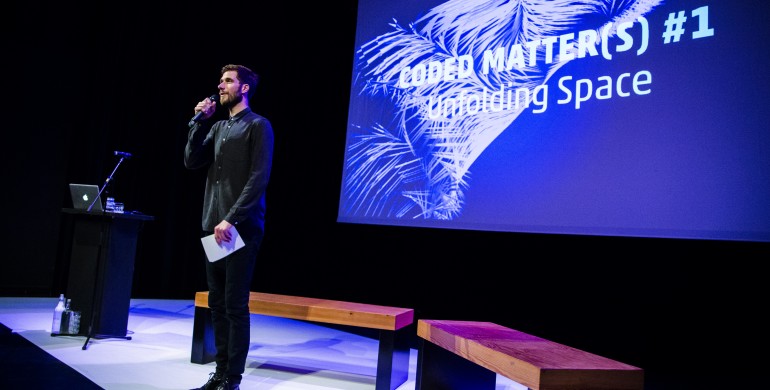Coded Matter(s) #1: Unfolding Space – Recap
As a retrospective for those who couldn’t attend, and as a recap for those who did, we asked Katía Truijen, new media researcher and blogger extraordinaire, to provide us with an objective voice of analysis and review of Coded Matter(s) #1: Unfolding Space.
Coded Matter(s) #1 – unravelling scenarios and absorbing spaces
The first edition of Coded Matter(s) Unfolding Space in de Brakke Grond offered a dazzling journey along new ways to (re)program space. Simultaneously it raised some critical questions about what it means that our surroundings have become increasingly coded, and how artists use code to alter our spatial experience. The evening kicked off with a bird’s-eye view of today’s cities and zoomed in all the way to an absorbing dance performance at the end of the night. What should we filter from these different levels of coded matter?
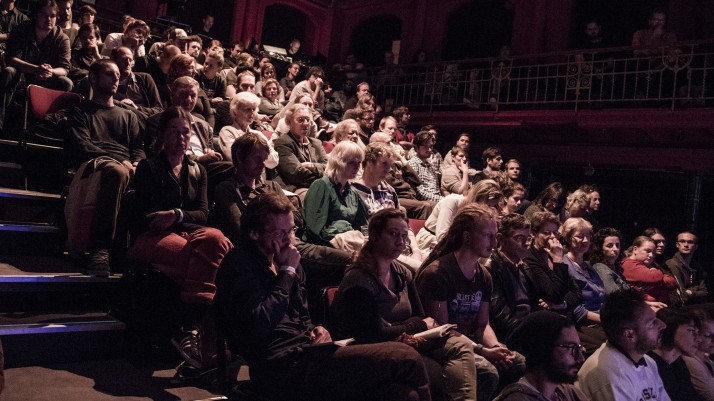
Michiel de Lange, co-founder of The Mobile City and lecturer in New Media, explains that our cities have become irreversibly hybrid. They are chock-full of (mostly invisible) wireless networks, software and mobile devices. This media city is almost talking to us, by recording and disseminating information 24/7. The emergence of the smart city shows us an urban scenario of efficiency, optimised consumption and control. Meanwhile interaction between urban strangers has become more rare, because people use smartphones to withdraw in their own safe cocoons of like-minded people.
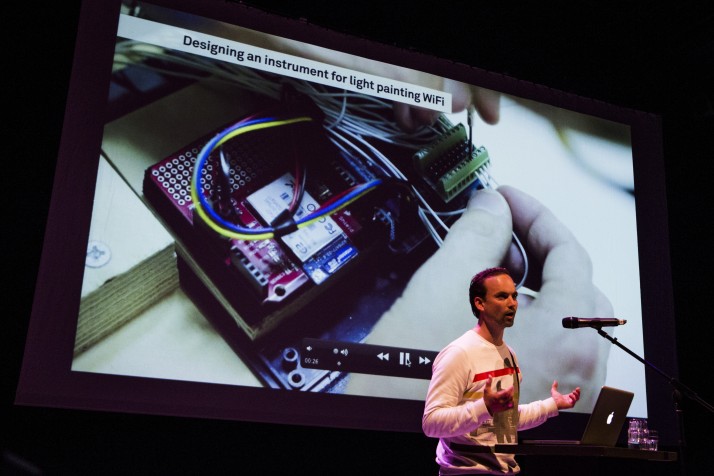
From the very outset media artists have been in a privileged position to comment on what is going on. To reflect on what is really new about a technology. They can open up other perspectives, or show us what de downside of new media could be. By consciously using code, they explore new narrative dimensions and visual aesthetics, Michiel de Lange states.
Like the guys from Elektropastete, who founded a DIY club for parties and now do video-mapping, stage design, installations and visuals for a variety of clients. Founder Moco Raffael Ziegler explains that they use different tools as they come, and then deal with mistakes along the way. Sometimes these mistakes make it all the more interesting. Like with the 4D tool to control and choreograph the army of 16 quadrotors. The use of extra mirrors accidentally caused an amazing visual effect.
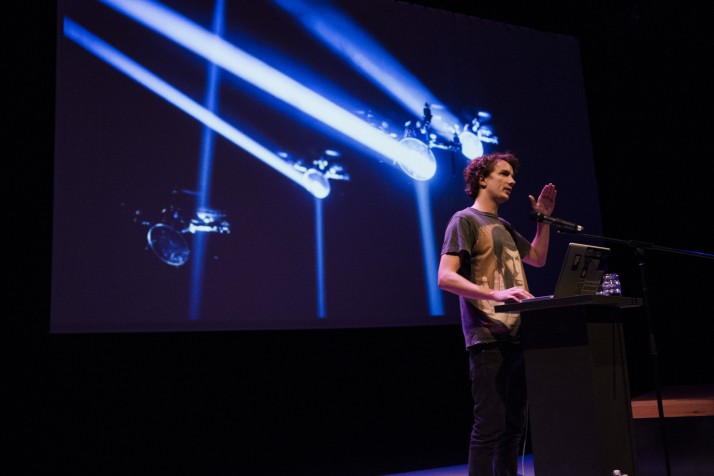
Artist Daniel Berio notices that the fact that we are now talking about the process of creating an artwork is actually very new. Some decades ago, artists only presented their last result. The long journey of coming to the perfection of an artwork remained invisible. But this process of creative decision-making is actually very interesting. Daniel Berio created the Graffitizer, an algorithmic graffiti installation, which creates graffiti pieces based on the drawing style of its creator. The picture that is drawn by the machine is only a souvenir of the installation. It shows an interesting relation between the machine and the artist; the drawings are signed both by Daniel Berio and the machine.
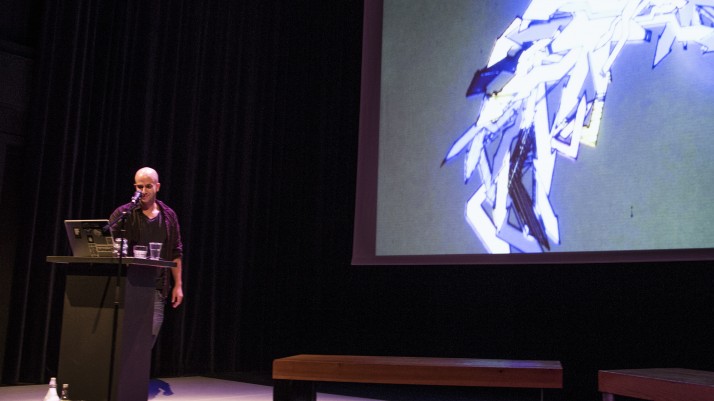
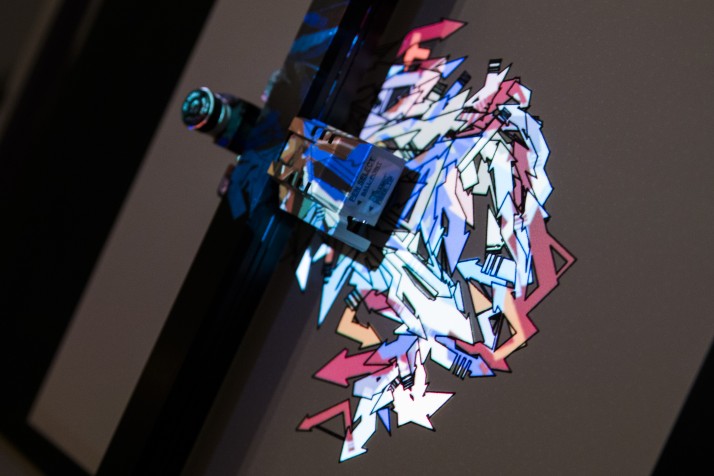
A work that lets us experience coded space very differently is Signal to Noise by LAb[au]. The overwhelming installation of mechanical split-flaps is an auto-poetic system using an algorithm to subtract noise. Els Vermang of LAb(au) tells that the work critically reflects upon our information society, where we continuously have to distinguish what’s important and what should be filtered out. LAb[au] makes art for the sake of art, but in retrospective some of their projects do raise some political questions as well.
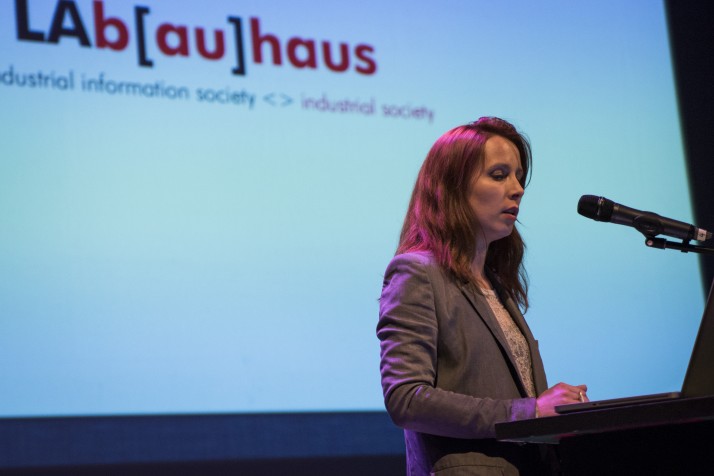
Technology has equipped society with enormous tools. Now the question arises how we will use them. It is hard to be critical towards technologies that are invisible. We don’t see what software is doing, where CCTV cameras are located, and how and when these technologies impact us. It seems that the critical minded artist can play a role in revealing coded matters and propose future scenarios.
Michiel de Lange adds that artists shouldn’t necessarily always engage in critical discussions. The interesting thing is that media are not used as a message, but they do speak about themselves. While a technology remains implicit, it still raises questions. Even the aesthetic use of technologies provides food for thought. Like the army of quadrotors of Elektropastete that allowed for a beautiful experience, but silently makes you aware of other possible uses of these drones as well.
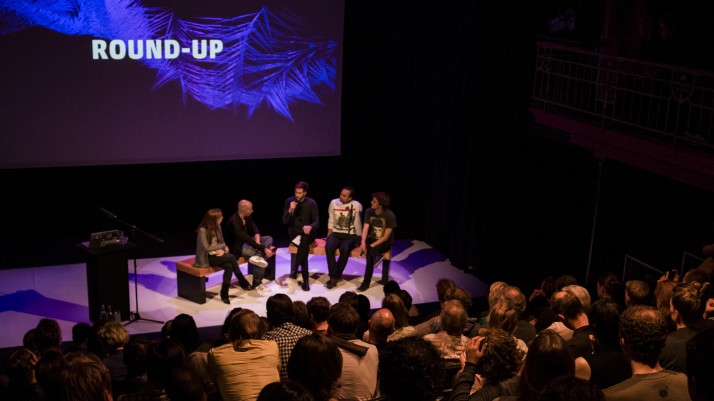
By coding and unfolding space, artists code our perception. They reveal technologies that remain invisible in everyday urban life, and simultaneously alter our spatial experience by absorbing us. The immersive electronic dance performance of Trinity expressed this beautifully at the end of this first edition of Coded Matter(s).
Katía Truijen
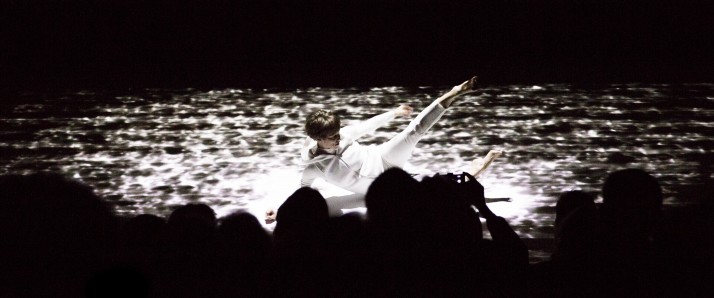
If you enjoyed Coded Matter(s) #1, be sure to save the date for November 10th, when Coded Matter(s) #2: Sound Hackers will take place! Also, check out Bring Your Own Beamer, coming to Vlaams Cultuurhuis de Brakke Grond on October 4th. See you there!
